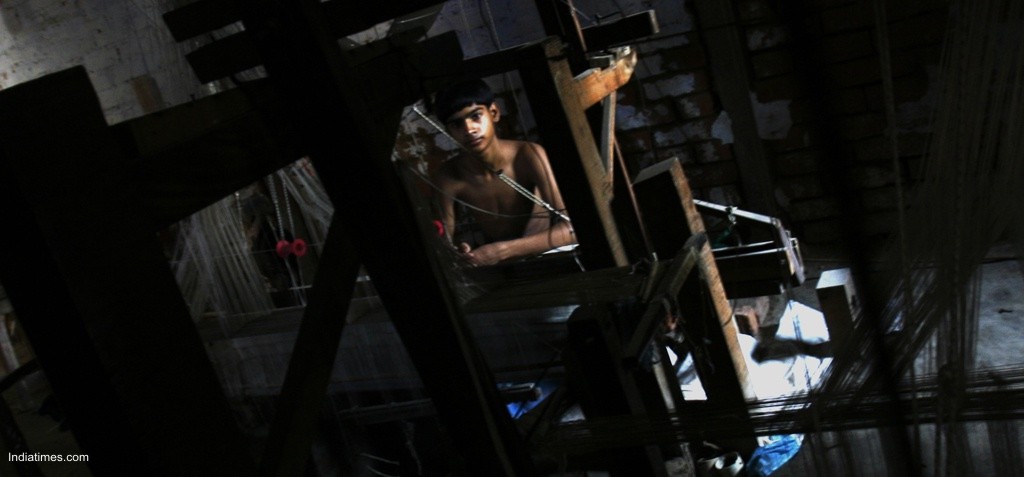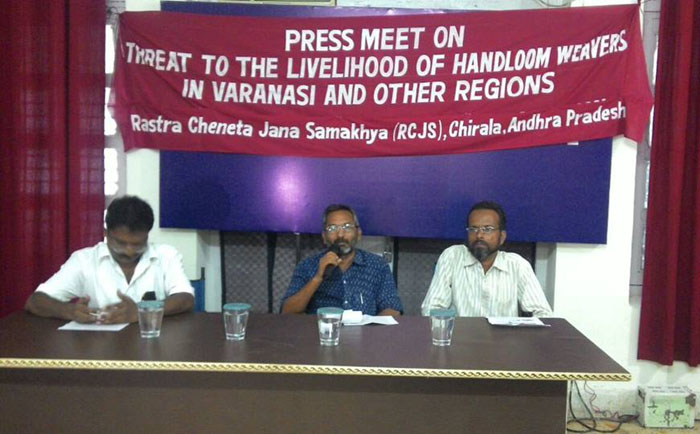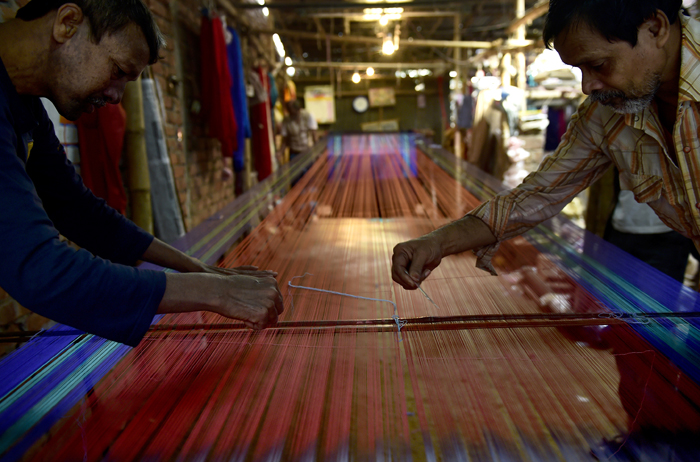
Fifty weavers committed suicide in Varanasi – Prime Minister Narendra Modi’s constituency – between 2014 and 2016, claims a study conducted by Rashtra Cheneta Jana Samakhya (RCJS) – a leading trade union of handloom weavers. Over 1,500 weavers – according to the RCJS findings – committed suicide in the last three years across the country. Just like the two villages adopted by Modi which are in shambles today. Sarpanches of both villages have complained that the quality of infrastructure projects was poor, and that they are being bypassed and victimised. Modi had adopted these villages under his flagship rural development project, the Sansad Adarsh Gram Yojna. Both lie in Modi’s constituency of Varanasi in Uttar Pradesh. The sarpanch of Jayapur village, which Modi adopted last November, said that the infrastructure erected hastily during the village’s first few months in the spotlight was falling apart. In Nagepur village, which Modi adoptedin February, the sarpanch has accused the prime minister’s representative of trying to fool villagers.
Now in yet another embarrassment to a government that has marked itself by embellishments and marketing extravaganzas, the report of the RCJS says that, in Varanasi, the government spent only 0.23 percent of the total budget spent on professional services for handloom and rest of the budget was spent on salary to government officials and incurring other expenditures. This means that a sum less than even Rs 50,000 was spent in Varanasi out of total expenditure of Rs 1.93 crore. The previous year’s expenditure on handloom services was 0.26 percent, which amounted to Rs 46,000.

Image: Indiatimes/Tarique Anwar
“The Joint Director (Handloom), Varanasi, spent Rs 1,93,11,516 in the year 2015-16 out of which Rs 49,880 (0.23%) was spent for payment for professional and special services.The rest of the amount was spent for salaries, dearness allowance, travel, medical allowances, etc. For the year 2014-15, total expenditure was Rs 1,76,60,071 out of which expenditure for payment for professional and special services was Rs 46,000 (0.26%),” says the study.
“This is how the government is treating weavers who mostly comprise schedule caste, OBCs and Muslims. It reflects political intention of government towards handloom weaver community. In the name of welfare of handloom weavers, meritorious and efficient good boys of government are enjoying good salaries. The situations of weavers in other places have become even more critical,” says M Mohan Rao, founder president of the RCJS.
“Since the new government came to power, earlier scheme of distribution of handloom accessories have been also abolished in Varanasi. This state of affairs is creating a livelihood problems to as many as 65 lakh handloom weavers engaged in the weaving occupation. We see the suicidal cases in handloom sector which is primarily the result minimum wage rate implementation of schemes. The situation in Varanasi worst,” he added.
The report highlights the absence of any support system and non-compliance of minimum wages. Mass migration of weavers to Surat, an industrial town in Gujarat famous for power looms, is also taking place.
There is also vast speculation that this is part of a hidden drive to cripple the vibrant Banarasi saree and weave market in north India and divert profits to Gujarat.
Abolition of welfare schemes like health insurance, work shed, and thrift funds have also been exposed during the course of the research.

Image: AFP
The federation has put forth the following demands: universal minimum income support of up to Rs 15,000 per month, insurance and provident fund services to weavers, immediate subsidy up to 20 percent on cotton hank yarn and silk zari, protection of the objective of current Handloom Act and implementation of schemes through co-operatives.
After agriculture, handloom sector provides jobs to around 6.5 million households that have been long ignored by all the governments.
Here is a List of Problems, But No Solution
Here's a look at the problems faced by the weavers:
1. Scarcity of silk yarn and cotton
2. Non implementation (indirectly abolition) of Handloom Reservation Act – which is causing tough completion with powerlooms
3. Abolition of government schemes like health insurance, work shed, thrift fund and etc
4. Non compliance of the minimum wage programs in this sector